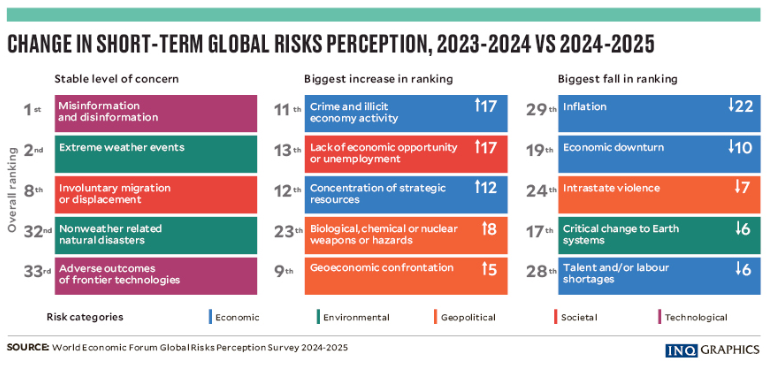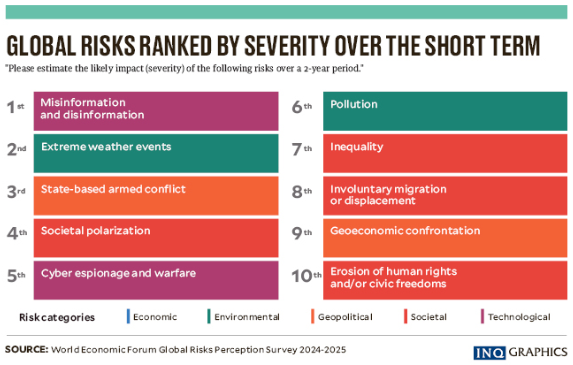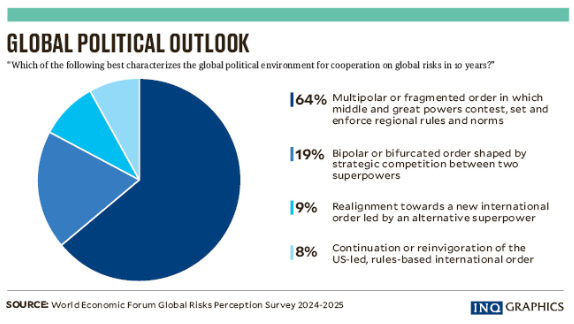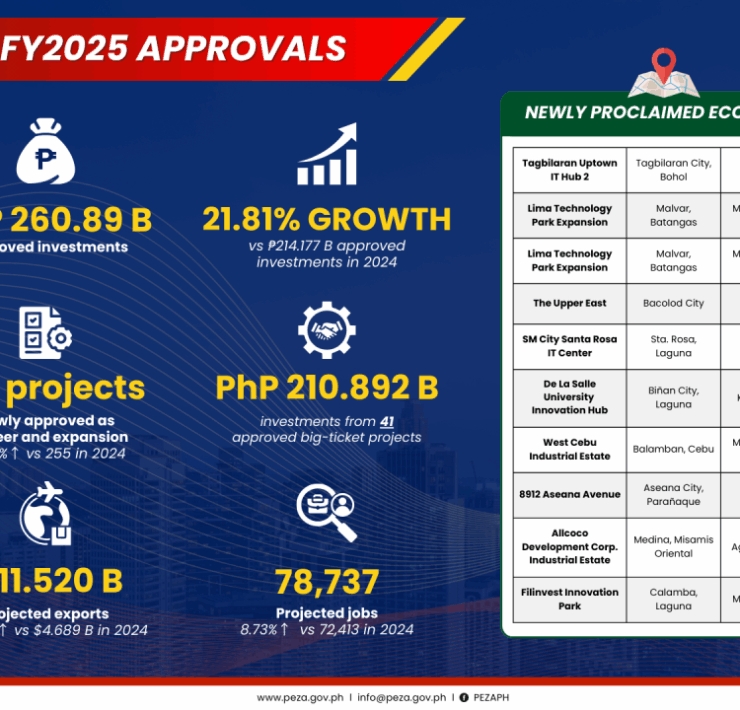Future shock: Top global risks today and in next decade

As we leave 2024 behind, a complex “super election” year that tested just about every global system, it’s likely with trepidation all leaders are asking: what can we expect in 2025 and beyond?
In this year’s World Economic Forum Global Risks Report, based on the annual Global Risks Perception Survey (GRPS), the answer is particularly sobering.
“Bleak” is the umbrella adjective describing the overall state of things in its current, 2-year and 10-year outlook prediction ranges.
While there is significant overlap between the environmental, societal, economic and other concerns of recent years, a new top risk has surfaced. State-based armed conflict, which wasn’t considered a major risk just two years ago, has become the most immediately pressing material threat in 2025.
But as the 20th edition of the report points out, the arrival or shifting of new or emerging risks is hardly surprising—especially in the short term—given that “We seem to be living in one of the most divided times since the Cold War.”
Here are some of the key findings and the changing global narratives shaping risk perception.

A familiar but evolving risk picture
The overall view of global risks is much the same as last year, if more negatively weighted.
A comparable proportion of this year’s respondents (52 percent), surveyed from September to October 2024, expect some instability over the next two years.
However, another 31 percent anticipate greater turbulence and 5 percent foresee global catastrophic risks in the short term, indicating a growing pessimism—with these three categories combined representing an increase of 4 percentage points from last year.
And nearly two-thirds (62 percent) of respondents predict a turbulent or stormy outlook over the next 10 years.
Environmental concerns featured heavily in last year’s report, accounting for half the top 10 risks over the next 10 years. And with 2024 the hottest year on Earth since records began and significantly impacted by severe weather, it’s a similar outlook in both the 2-year and 10-year scenarios.
Extreme weather events remain at number 2 and number 1, in the 2-year and 10-year outlooks, respectively, with younger people and those in civil society most likely to categorize this as the most critical current risk of the immediate future.
However, it was the top risk of the next decade for all stakeholder groups.
Pollution is seen as a more pressing short-term risk, and biodiversity loss and ecosystem collapse is perceived as a greater threat in the longer term.

What’s different this year?
Despite relatively slow global growth in 2024, no economic risks make the top 10 of this year’s 2-year risk ranking.
Following the high global inflation of 2022 to 2023, headline inflation is expected to fall to 3.5 percent by year-end according to the International Monetary Fund, a trend reflected in the growth and poverty reduction strategy survey results.
Both inflation and economic downturn have slid dramatically down the rankings.
However, the immediate risk of the latter has risen, up one place from last year to number 6 in the current global risks landscape. Younger age groups are especially concerned about this.
In a world of deepening political divisions, rising protectionism and weakening trust, there is a growing sense of fragmentation—both within societies and among countries.
Misinformation and disinformation and societal polarization remain top current risks, in the number 4 and number 5 positions, respectively, but the severity score of the former has increased year-on-year and it is once again the dominant risk over the 2-year horizon.
With 2024 the year AI went mainstream, concerns about the adverse outcomes of AI technologies are even lower in the short term but expected to grow, and are at number 6 in the 10-year timeframe.
And not surprisingly, given the many high-profile cyberattacks in 2024 in a time of increasing geopolitical fragmentation, cyber espionage and warfare is at number 5 in the 2-year rankings.
Other notable shifts
State-based armed conflict is the top current risk in 2025 and is also up from number 5 to number 3 in the 2-year timeline.
The destabilizing consequences of Russia’s invasion of Ukraine, and the ongoing conflicts in the Middle East and Sudan are likely heightening respondents’ concerns, the report says.
The other GRPS 2024 to 2025 risks with the sharpest rises in rankings compared to the previous year are geostrategic in nature.
Biological, chemical, or nuclear weapons or hazards (number 23) and Geoeconomic confrontation (number 9) are up 8 and 5 positions, respectively, since last year in the 2-year risk rankings.
However, geopolitical risks are noticeably absent from the top 10 rankings when it comes to the outlook for the next decade.
Addressing global risks at Davos
Now in its 20th year, the latest Global Risks Report sets the agenda for discussion at the World Economic Forum’s Annual Meeting in Davos, which takes place this week.
This year’s risks will be discussed at the Global Risks 2025 session on Jan. 23, moderated by the Economist’s Zanny Minton Beddoes, when global leaders will explore how to prepare for an increasingly volatile global landscape.





















